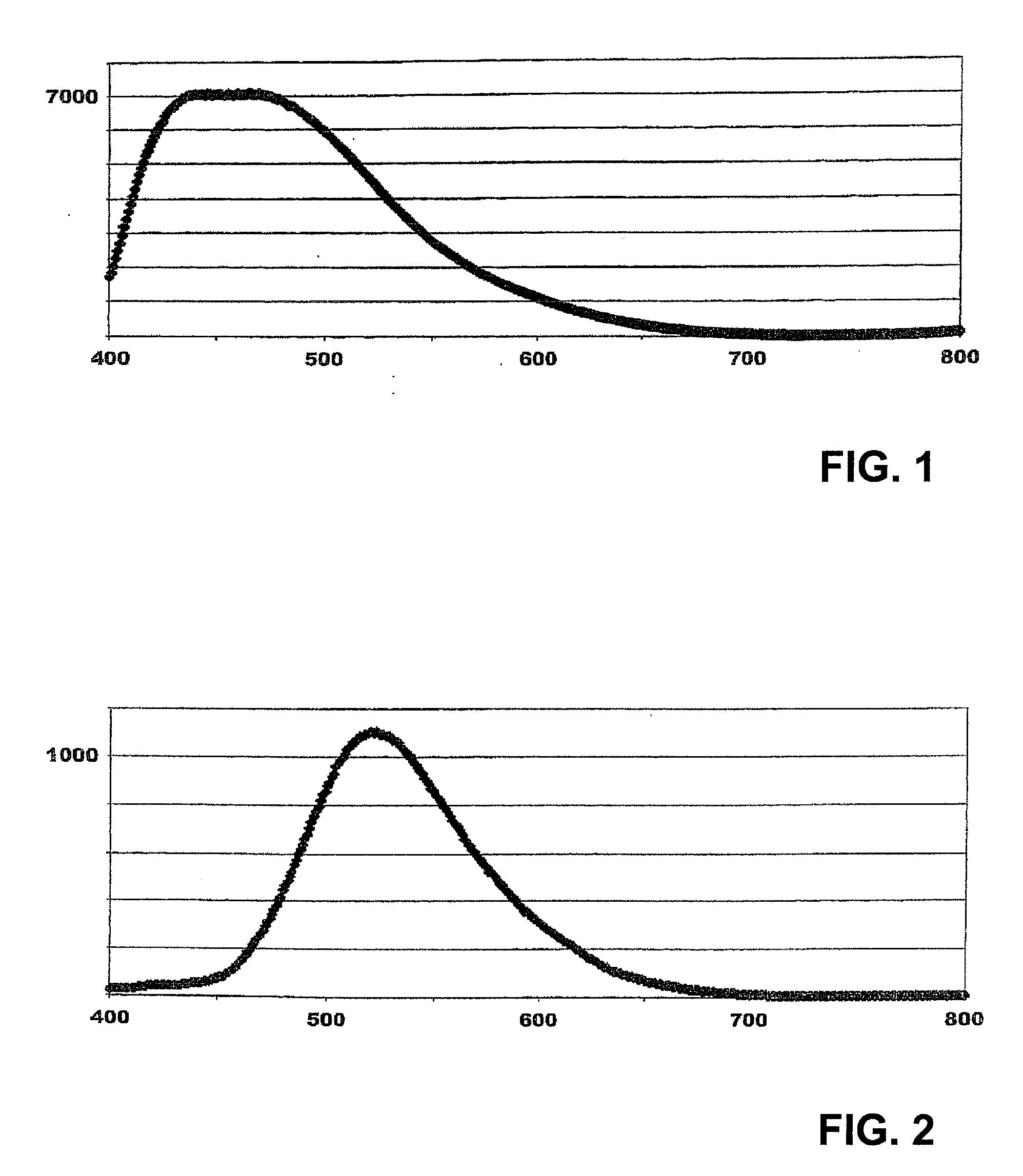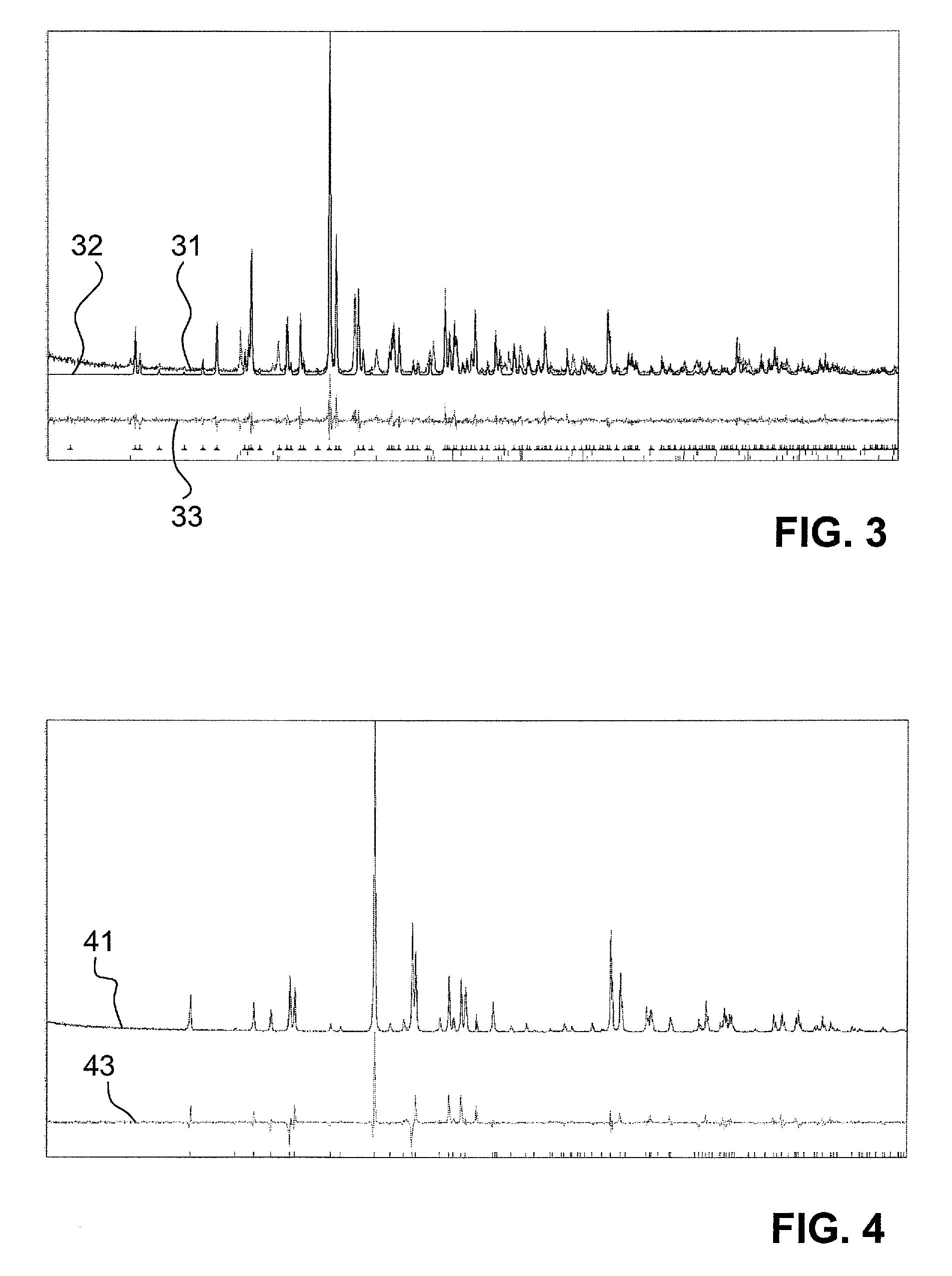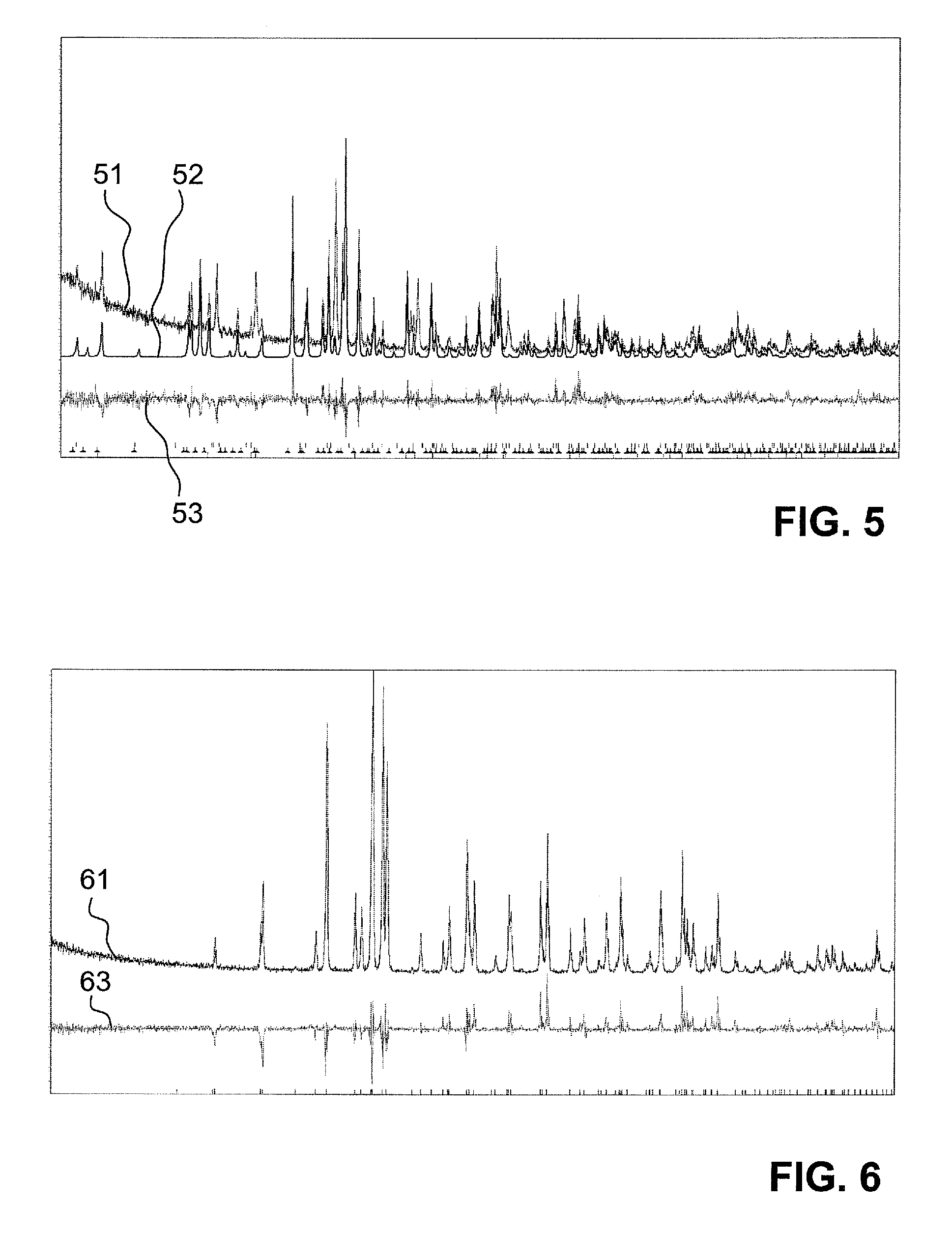Novel materials used for emitting light
a technology of electromagnetic radiation and materials, applied in the direction of luminescent compositions, chemistry apparatuses and processes, etc., can solve the problems of not performing well in other systems, largely developed for use with mercury vapour, and known and existing phosphors, etc., to achieve low cost, strong optically active properties, and minimal disruption
- Summary
- Abstract
- Description
- Claims
- Application Information
AI Technical Summary
Benefits of technology
Problems solved by technology
Method used
Image
Examples
Embodiment Construction
[0035]To demonstrate the validity of this approach a wide number of systems have been studied, which include:[0036]The alkaline earth ortho-silicates, notably Ca2SiO4, Sr2SiO4 and Ba2SiO4, doped with Eu2+, where the dopant may be either the fluoride or the oxide of the rare earth metal (to show the fluoride-into-oxide heteroatom effect), the dopant concentration ranges between 0.5 mol % to 2.5 mol %, the calcination temperature ranges between 700° C. and 900° C., and the reduction temperature ranges between 900° C. and 1100° C.[0037]In the Ba2SiO4 system, the emission under 254 nm and 366 nm UV is notably shifted towards higher wavelengths for the fluoridedoped systems, at all doping levels, with this being more pronounced at combination of the lowest calcination temperature and the highest reduction temperature (strong green).[0038]In the Sr2SiO4 system, the fluoride doping universally shifts the emission towards higher wavelengths.[0039]The alkaline earth simple silicates XSiO3 an...
PUM
 Login to View More
Login to View More Abstract
Description
Claims
Application Information
 Login to View More
Login to View More - R&D
- Intellectual Property
- Life Sciences
- Materials
- Tech Scout
- Unparalleled Data Quality
- Higher Quality Content
- 60% Fewer Hallucinations
Browse by: Latest US Patents, China's latest patents, Technical Efficacy Thesaurus, Application Domain, Technology Topic, Popular Technical Reports.
© 2025 PatSnap. All rights reserved.Legal|Privacy policy|Modern Slavery Act Transparency Statement|Sitemap|About US| Contact US: help@patsnap.com



